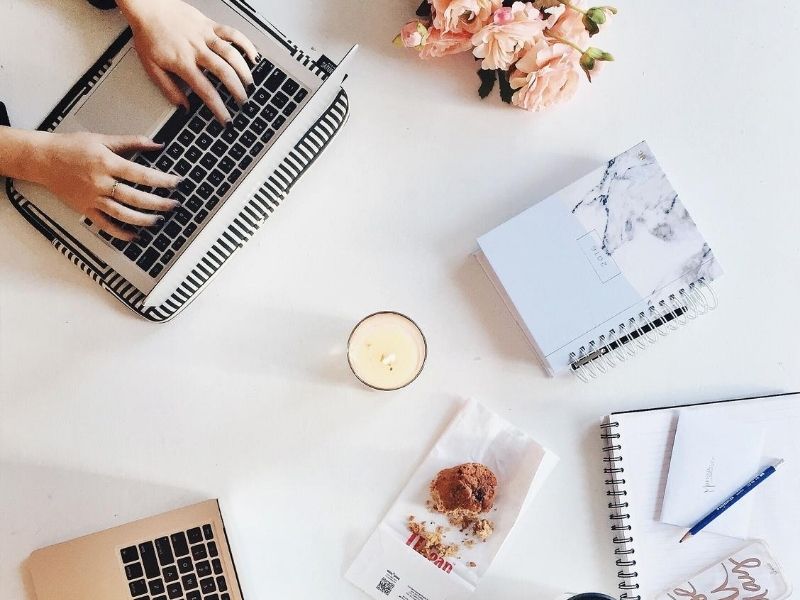Are you confused by your Pinterest Marketing?
Do you feel like you’re banging your head against a brick wall when it comes to increasing the traffic to your website or getting more sales? You’ve heard all this exciting stuff about how Pinterest can help your business, but so far you’re not sure what all the fuss is about –
because you’re seeing nothing from it.
You’re not alone.
So many of my clients come to me feeling like they’re getting lost in the black hole of the internet. Dropping into the abyss, buried under other posts, never to be seen again.
There used to be the mindset of ‘if you throw enough mud at a wall, some will stick’, but you have to be more strategic than that when using Pinterest – or any platform really!
Pinterest is a wonderful tool for driving traffic to your website, regardless of what you offer or write about. All you need to know is how to approach it and what you’re doing wrong when there’s no traffic.
If you have great content and use Pinterest efficiently, you’ll see more traffic to your website and increase your sales, almost passively!
If you’re currently using Pinterest and aren’t happy with the results, or aren’t seeing the increased website traffic you expected, it’s time to rethink your strategy.
Here are the main reasons Pinterest isn’t working for you, and how to turn it around!
Your Profile isn’t search friendly!
Sure your quirky username that bears no resemblance to your business name is cute or funny, but it’s doing you no favours when it comes to getting traffic from Pinterest.
I can’t stress this enough, everything you put on Pinterest matters. Your account needs to be optimised to its full potential in order to be search-friendly.
Remember, Pinterest is a search engine – not ‘just another Social Media Platform’.
If there’s one thing you really need to get right to make the most out of your Pinterest Marketing, it’s making sure your account is search friendly.
Here’s how:
- Check your Photo – Your photo should either be your business logo or a nice headshot of yourself. Make sure your profile photo is good quality and is 500pt X 500pt.
- Update your account name – Your account name should include your name and be followed by a few specific keywords for your audience to find you. I know this is really hard when you only have 30 characters to work with but try cutting down your business name. For example, Grow With Leah can be GWL. You sometimes need to think outside of the box.
- Check your Bio – Add as many relative keywords as possible, strung into coherent sentences. Let your audience know what you do, who you help, and how you help them. Don’t add a link, or instagram handle, to your bio – instead, claim your domain and it’ll show as a clickable link instead. Your audience should know exactly who you are without having to go further than your profile page. Do not add #’s here. They don’t add value and are pretty pointless in a bio. *updated – don’t use # anywhere on your account or pins*
Your boards & pins aren’t optimised!
Optimisation will be a recurring theme in this post, your boards & pins aren’t exempt from it.
Make sure your boards and pins are well optimised for search, in the same way as your profile bio, by including detailed keyword-rich descriptions and search-friendly titles… e.g ‘Cute kinis’ is not a search-friendly board name, you stand a better chance of being found in searches with ‘Cute Bikinis’, instead.
Including keywords and phrases wherever you can in your boards and pins, helps to boost your views from the search feed.
Here’s what you need to do;
- Keyword Research – Before you begin writing descriptions for your boards and pins, do your keyword research. Come up with a list of relevant keywords your target audience is searching for.
- Sound natural – Try and keep your descriptions sounding natural. Your audience is more willing to click on a pin with a conversational tone than with a sales pitch or | list | of | keywords | like | this. Plus, Pinterest hates keyword stuffing!
If you’re really stuck on your keyword research. Contact me and let’s discuss how I can help you reach your ideal audience more efficiently!
You’re not sticking to your topic
If you want the Pinterest smart algorithm (and it really is smart) to put your content infront of your target audience, you need to make sure all of your content – including your boards – are relevant. Your account needs to appeal and make sense to your audience, not to yourself.
That doesn’t mean it has to be a robotic slate that shows no personality, but try to keep off-topic boards to an absolute minimum. Clean up your boards and archive (or make secret) any boards that are irrelevant and don’t serve your audience.
For example: A home decor account could have multiple boards about garden design, bedroom decor, home renovation etc. but the Pinterest bots wouldn’t expect to also find boards about hair & make up. And while having multiple topics can help increase your views, it confuses the algorithm and does nothing towards increasing engagement with your content.
Don’t worry about deleting old pins. This is a nightmare of a task that isn’t needed. Pinterest will learn that you’re no longer targeting those topics when you stop pinning about them.

You’re not consistent
Consistency (and quality) over quantity is the key. Pinterest loves people who are regularly active on its platform. This means you need to be consistently pinning on their platform throughout the day.
How often you pin depends on how much new content you publish, pick what works for you (whether that’s 1x, 5x, 10x or anywhere in between) and do it consistently every day. Mass pinning in the evening twice a week won’t cut the butter with Pinterest. They want to see you adding new high quality content regularly for them to want to distribute your work.
Ways to do this include;
- Using Pinterest’s inbuilt scheduler. This lets you schedule up to 100 pins at a time but no more than 4 weeks ahead.
- Use Tailwind which is a premium scheduler that has more features than Pinterest’s inbuilt one. Using Tailwind to grow your Pinterest allows you to schedule hundreds of pins at a time, meaning you can spend 30 minutes a day and have your whole week (or month!) mapped out for you!
Here are 4 signs you might be ready to hire a Pinterest Manager
You’re not creating fresh pins
Consistent FRESH pins are what Pinterest really goes goo-goo for.
Pinterest encourages you to create multiple pin images for every post/product you create to allow you to have fresh pins to share each time.
If you have a lot of content on your site, chances are you have a lot of ‘stale’ images that Pinterest is no longer interested in. Go back to them and create new pins to give them a new lease of life!
For every new piece of content, you create, make at least 3-5 pins but the more you create the longer it’ll be before you have to make new ones for it. A good Pinterest image is portrait format with text overlay briefly explaining what it links to.
I use Canva to create my pin templates. This saves me heaps of time because now I only have to focus on switching out images and text, rather than formatting a pin each time.
If you’re a blogger, publishing new posts regularly can help push your Pinterest potential even further. Service providers and sellers using Pinterest could also set up a small blog that would help promote their business further.
Top Tip; Run tests. I can almost guarantee the pin image you love the most, will be the one that underperforms. Try different pin styles to find what works for you and your brand.

You’re not adding value
Valuable content is important to Pinterest too. It wants to know that the content it is distributing provides a valuable service to the people who use the platform.
Remember to check your analytics and find out what’s doing well, then repeat it. Check the trends tab and see if any align with content or products that you already do and optimise for them!
Following your analytics and adjusting accordingly is what will set you apart from the rest.
You’re using outdated methods – like the 80/20 or 70/30 rules…
We’ve all seen the recommendations that you must pin 80% of other people’s content and 20% of your own. This might have been right a several years ago but now it’s old news.
There are no hard and fast rules to how much content from other people you need to be pinning, but my in the years I’ve spent managing hundreds of Pinterest accounts, I’ve seen that older accounts need to rely a lot less on sourced content than newer accounts.
If you’re not seeing results, try playing around with the ratios until you see what works for you but remember the goal is to get clicks to your own content not views.
Ready to get out of the Pinterest rut?
These are the usual culprits to an account being in a Pinterest rut. Doing one of these things incorrectly can really slow down your progress without you even realising it! Pinterest Marketing is so much more than just pinning a lot of images and hoping for the best.
This was a lot to take in, so lucky for you I’ve created a Pinterest Account Checklist to help you work through any improvements you might need to make on your account! Grab it via the form below!
Newsletter
Get your FREE Pinterest Checklist
& grow further with your account!
